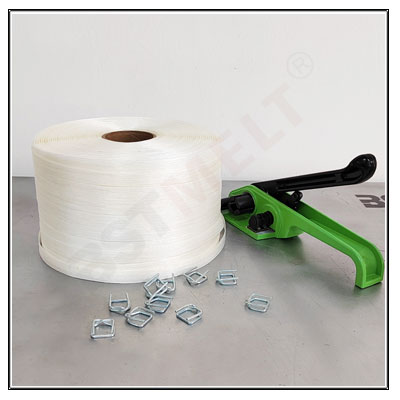Bonded strapping is quickly gaining traction in the packaging and shipping industries due to its numerous advantages over conventional manual methods such as steel straps, metal banding, rope, plastic straps, and stretch film. As the global logistics landscape evolves, companies are increasingly seeking efficient and safe ways to secure their goods during transport and storage. Bonded strapping, known for its durability, flexibility, and ease of use, presents itself as a superior alternative to traditional materials.


Unlike steel strapping, which is prone to rust, sharp edges, and potentially hazardous handling, bonded strapping offers a smooth, lightweight, and user-friendly solution. It eliminates the need for special safety equipment, reducing the risk of injury during manual application. This feature alone makes it highly preferred for a variety of applications, from securing heavy machinery to bundling lighter goods. The flexible nature of bonded strapping allows for easy adjustments and creates a secure hold that absorbs impacts and shock without compromising the integrity of the packaging.
Furthermore, bonded strapping’s cost-effectiveness is a notable benefit. Compared to metal banding and steel straps, bonded strapping is less expensive to manufacture and apply. It is also easier to dispose of or recycle, aligning with modern sustainability goals. In contrast, steel straps can lead to costly downtime in packaging lines due to their weight and complex handling, which often requires specialized tools. The switch to bonded strapping minimizes operational costs, saves time, and reduces environmental impact without sacrificing performance.
Another compelling advantage is bonded strapping’s resistance to weather and environmental conditions. Unlike some plastic straps or stretch films that can weaken due to UV exposure, extreme temperatures, or moisture, bonded strapping remains robust in a wide range of settings. This makes it suitable for outdoor storage, cross-border shipments, and demanding transport routes. The use of composite materials in bonded strapping ensures high tensile strength and elasticity, providing consistent and dependable load security under the harshest conditions.
Compared to rope and plastic straps, bonded strapping offers superior strength and longevity while maintaining its position even when exposed to vibration or shifting loads. Unlike stretch film, which can loosen over time and fail to restrain bulky or heavy items effectively, bonded strapping maintains a tight grip that ensures stability during transit. Additionally, bonded straps are easy to apply manually or with semi-automatic devices, allowing operators to quickly secure loads and maximize productivity.

With businesses facing increasing pressures to enhance supply chain efficiency, reduce costs, and maintain safety standards, bonded strapping has emerged as a powerful and practical solution. Companies that transition to bonded strapping benefit from improved packaging outcomes, greater flexibility, and reduced risks—key factors in today’s competitive market. As more manufacturers and logistics providers recognize these advantages, the demand for bonded strapping is expected to continue its steady rise, further solidifying its role as a preferred choice for securing goods in diverse industries worldwide.
Others News
 Bonded Cord Strapping: A Versatile Solution for Securing Bales Made with Vertical Balers
Bonded Cord Strapping: A Versatile Solution for Securing Bales Made with Vertical Balers Bonded Cord Strapping: The Ultimate Solution for Securing Your Packaged Cardboard Boxes
Bonded Cord Strapping: The Ultimate Solution for Securing Your Packaged Cardboard Boxes Bonded Strapping: Revolutionizing the Packaging Industry with Speed, Safety, and Cost-Effectiveness
Bonded Strapping: Revolutionizing the Packaging Industry with Speed, Safety, and Cost-Effectiveness Bonded Strapping: A Revolutionary Polyester Strapping Solution for Bale Presses
Bonded Strapping: A Revolutionary Polyester Strapping Solution for Bale Presses